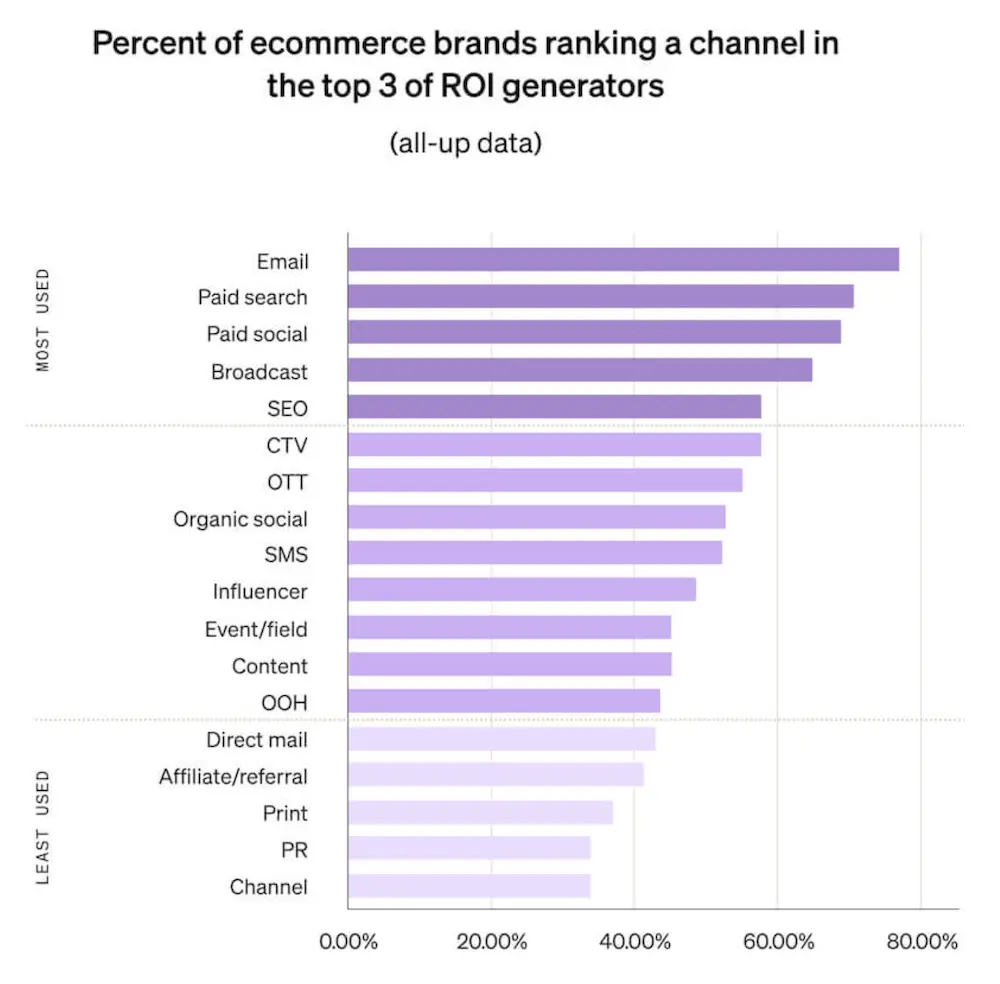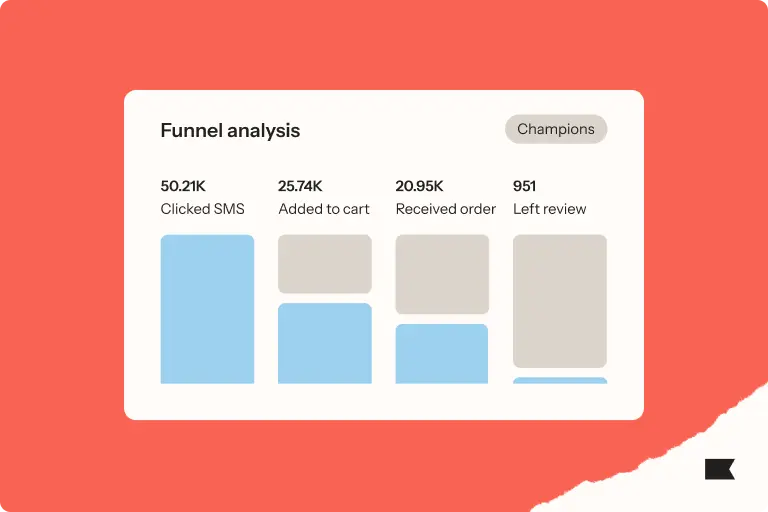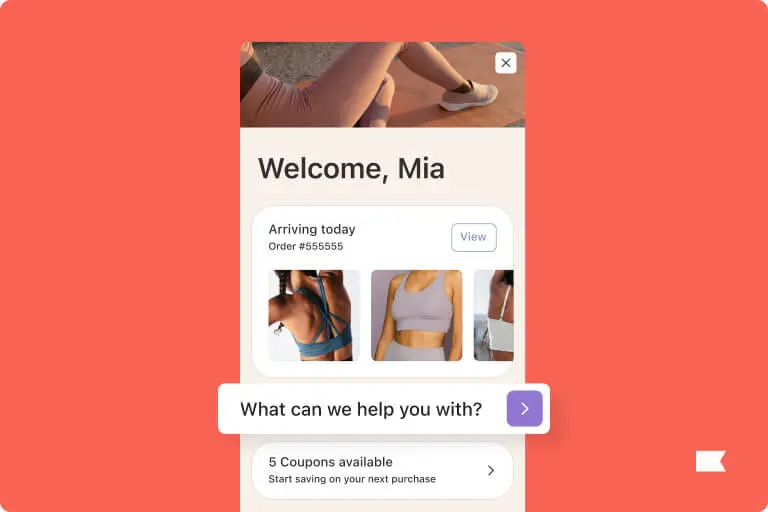What is behavioural targeting? When people show you who they are, believe them—and market to them accordingly
If someone places an order in your online store, it’s logical to follow up with them to encourage another purchase.
But when do you follow up? With what messaging? And on what channel?
Answering those questions, says Jon Palmer, lead product marketing manager at Klaviyo, requires achieving a holistic, 360-degree view of not only the customer in question, but all of your other customers, subscribers, and potential customers as well—and that means that simply knowing someone placed an order “is not enough,” he says.
As Palmer asks, “what SKU did they buy? When does the typical customer of that SKU go from purchase 1 to purchase 2? And based on this individual’s level of onsite activity and email engagement and average order size, when are they likely to purchase again?”
Ideally, Palmer adds, “you have AI feeding into it, too. So it’s not just historical data, but also what someone is likely to do in the future based on what they’ve done in the past. And other people like them, too.”
It’s a lot to consider—and it’s all part of how behavioural targeting works.
What is behavioural targeting?
Behavioural targeting is a form of personalised marketing in which the recent and historical activities of your subscribers, customers, or web browsers determine the kind of messaging you send them next.
Together, these behavioural data points leave a unique trail of breadcrumbs your brand can scoop up and use to sort people into different categories, or audience segments—making it easier for you to send timely, tailored marketing messages to your target audience.
Behavioural targeting means taking the entirety of customer behaviour, and personalising communication based on that.
Note that the key word there is “together,” Palmer says: “Behavioural targeting means taking the entirety of customer behaviour, and personalising communication based on that.”
What Palmer means by “entirety of customer behaviour” is all touchpoints. The words or phrases someone types into your site search, the pages they view most frequently, where they spend the most time on your site and mobile app, what they click on in emails and texts, their in-store and online purchase behaviour, activity in your loyalty or rewards program—“the whole thing,” he says.

Source: Klaviyo
Behavioural targeting vs. contextual targeting
Contextual targeting aligns advertising with the webpages on which those ads appear, which makes it less personalised than behavioural targeting. Applicable in the realm of paid retargeting ads, it focuses on the similarities between content and shows shoppers relevant ads on contextually similar sites within the Google Display Network.
The main difference between contextual and behavioural advertising, then, is that contextual advertising is less precise. Whereas contextual targeting creates an ad experience based on where “best-fit” potential customers are likely to browse, behavioural targeting is about crafting a personalised customer experience based on the actual user data you’ve collected—not assumptions you make based on where they’ve landed around the web.
4 key benefits of behavioural targeting for marketing teams
According to Accenture, while 64% of consumers wish companies would respond faster to meet their changing needs, 88% of executives believe their customers are changing faster than their business can keep up.
Strategic behavioural targeting is one solution to that challenge. Here are 4 ways it keeps you competitive at a time when shoppers’ needs are constantly shifting:
1. Behavioural targeting helps you make informed decisions
The beauty of behavioural targeting is that it’s based on facts, not assumptions. Because the bedrock of behavioural targeting is consumer data that goes beyond mere demographics, it removes the guesswork so that you can focus on building an experience around the actual actions and preferences of your customers—both historical and real-time.
There’s often a disconnect between what people say they’re going to do and what they actually do. With behavioural targeting, you’re actually mapping what the customer has done and has demonstrated interest in.
“There’s often a disconnect between what people say they’re going to do and what they actually do,” points out Lucina Kress Rowe, principal customer success manager at Klaviyo. With behavioural targeting, “you’re actually mapping what the customer has done and has demonstrated interest in, even if they’ve never told you about it.”
In other words, you don’t have to go searching in the dark to discover what an exceptional customer experience looks like. Whatever your marketing message may be, behavioural targeting uses observable, trackable data points to ensure it resonates with the customer who receives it—at any given stage of the customer lifecycle.
2. Behavioural targeting improves customer engagement
As Devin Bhatia, principal customer success manager at Klaviyo, points out, “the barrier to entry for starting a company is lower than ever before, and that means the battle for attention is greater than ever before.”
The barrier to entry for starting a company is lower than ever before, and that means the battle for attention is greater than ever before.
By sending relevant content to your subscribers, “you increase the chance that they’ll not only engage with it, but also actually enjoy it and look forward to hearing from your brand again,” Bhatia explains. “It becomes a different type of experience. It’s a lot more personal.”
It’s also a lot more worthy of attention, clicks, and conversions. While 71% of consumers expect personalisation from the brands they interact with, even more (76%) get frustrated when they don’t get it, according to McKinsey & Company—and companies that excel at personalisation in marketing generate 40% more revenue from related activities than average players.

Source: McKinsey & Company
“If you care about growing a business in the long term,” Palmer says, “behavioural targeting is definitely going to help with customer retention and optimising for customer lifetime value (CLTV).”
If you care about growing a business in the long term, behavioural targeting is definitely going to help with customer retention.
3. Behavioural targeting boosts deliverability
Because inbox providers take user engagement into account when deciding whether to allow your emails into inboxes or filter them out as spam, “sending higher-quality, personalised emails, to people who actually want to receive these emails, creates a better customer experience and saves your deliverability,” Bhatia says.
Sending higher-quality, personalised emails, to people who actually want to receive these emails, creates a better customer experience and saves your deliverability.
“If you mess up your deliverability, you have a headache for a few months, maybe even half a year,” Bhatia adds. “So that becomes really important.”
4. Behavioural targeting makes your marketing spend more efficient—and effective
Achieving your return on investment (ROI) goals requires investing in the marketing strategies, channels, and campaigns that resonate with prospects and customers.

Source: Klaviyo marketing mix report
By narrowing your marketing scope so that you stop throwing everything at everyone and hoping something sticks, behavioural targeting ensures you’re not wasting money, time, or other valuable resources on efforts that just aren’t working. Instead, you’re making use of the channels that drive high conversion rates and give back the value you’ve put into them.
Follow your audience’s lead with Klaviyo
Every time someone interacts with your business, from opening an email to refilling a subscription from your ecommerce store, they leave you a clue about who they are in relation to your brand—what makes them click, what makes them bounce, and what makes them buy.
It’s much easier to make decisions backed by data than it is to guess and hope you’re right—and the actions of your audience can be one of the most powerful data sources for your brand.
But in order to get the most out of behavioural targeting, you need tech like Klaviyo, which powers smarter digital relationships by activating all your data in real time, connecting you with customers through a seamless user experience across multiple channels, and guiding your efforts with built-in AI and analytics.
With data collection, data storage, data transformation, marketing activation and orchestration, and customer insight analysis all under the same roof, Klaviyo “makes sure that as the data’s arriving, we’re also making it very purposeful for all the different ways it’s going to be used,” explains Nick Kobayashi, group product manager at Klaviyo.
Your site visitors, subscribers, and customers hold all the information you need to accomplish that. All you have to do is follow their lead.
Behavioural targeting FAQs
What are the pros and cons of behavioural targeting?
The pros of behavioural targeting include making more informed marketing decisions, improving customer engagement, boosting marketing metrics like clicks and conversions, and making marketing spend more efficient. The cons of behavioural targeting are mostly related to the ethical concerns it raises about personal data privacy, especially behavioural targeting based on third-party cookies and tracking pixels. Marketers can solve those problems by rooting their behavioural targeting efforts in zero- and first-party data, in which subscribers and customers explicitly consent to sharing their personal information with a brand.
What are the main types of behavioural targeting?
The main types of behavioural targeting include on-site behavioural targeting, in which brands display particular site ads and content based on the actions someone has taken or is currently taking on their website or in their marketing messages; and behavioural targeting in owned marketing efforts, in which brands deliver personalised email marketing campaigns, SMS marketing campaigns, and mobile push notifications based on observable consumer behaviour.
What is online behavioural targeting?
Online behavioural targeting is a form of online advertising in which recent or historical browsing behaviour, email and SMS engagement, purchase activity, and other behavioural patterns determine the kind of messaging you send your subscribers, customers, or web browsers next.

Related content

Learn how to use Klaviyo data to improve personalisation, enhance customer journeys, and boost engagement for long-term retention.

Learn about customer segmentation examples that can boost your marketing strategy, improve engagement, and drive revenue.

Discover how ecommerce personalisation enhances customer experiences and boosts revenue with real examples and proven strategies.